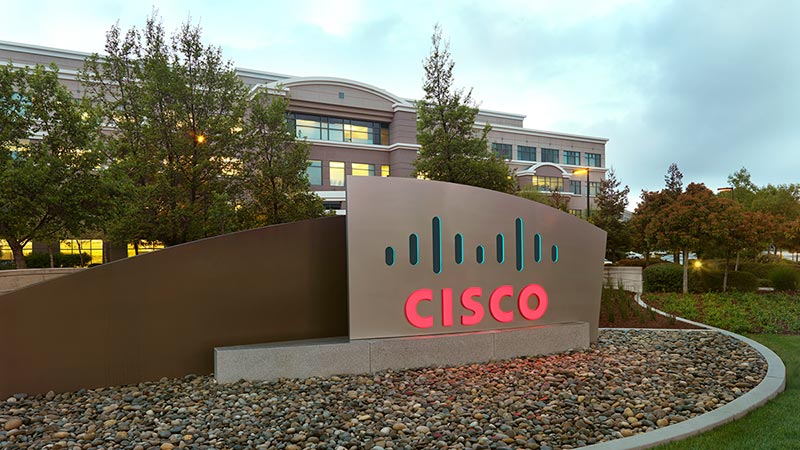TORONTO, ON - February 23, 1999 - Cisco Systems Canada Co. today announced it is delivering the fourth phase of its five phase Optical Internetworking Strategy designed to deliver data optimized new world network architectures with fundamental cost, scalability and functionality advantages over old world solutions. The solutions launched today are a result of the research conducted here in Canada at Cisco's research and development facility located in Nepean, Ontario.
This product is the first Cisco technology to result from Cisco's acquisition of Skystone Systems. In 1997 Cisco Systems, Inc. acquired privately-held Skystone Systems Corp. of Ottawa, Ontario an innovator in moving Internet Protocol (IP) traffic over high-speed Synchronous Optical Networking/Synchronous Digital Hierarchy (SONET/SDH) technology.
With the acquisition of Skystone, Ottawa was established as a centre of competence for the research and development of high speed transmission technology for Cisco. Under Cisco's direction, the former Skystone has nearly doubled in size and now has approximately 85 employees. As evidenced by today's announcement, the facility has also broadened the scope of its research since the acquisition. In this fourth phase, Cisco is rolling out its Dynamic Packet Transport (DPT) family of packet optimized transport solutions designed to redefine metropolitan area network architectures to handle IP traffic and services, in a scalable, robust and cost-effective manner.
DPT delivers high bandwidth, resilient fiber rings optimized to carry large and rapidly growing volumes of packet traffic. DPT technology provides significant cost reductions through equipment layer elimination, enhanced bandwidth efficiency and plug-and-play operations. DPT also combines LAN-like capabilities such as packet prioritization, multicasting and address filtering with fast protection switching to provide a robust metro transport platform for enhanced IP services such as voice and video over IP and Virtual Private Networks (VPNs).
DPT substantially reduces both capital and operations costs by eliminating expensive and inefficient layers of time-division multiplexing (TDM) transport gear, and integrating their capabilities such as proactive performance monitoring, fast protection switching and long reach optics directly into the router.
DPT combines innovative New World technology with the best of traditional capabilities to provide transport infrastructure flexibility and evolution for both incumbent and greenfield service providers. Incumbent carriers with an extensive base of synchronous optical network/synchronous digital hierarchy (SONET/SDH) equipment network can leverage this equipment while migrating to packet optimized transport solutions. Greenfield service providers can move directly to packet optimized transport either by deploying DPT on dark fiber or WDM transport gear. "DPT is a fundamentally important technology for building packet optimized intraPOP and metro network architectures" said Ian Reingold, director of data engineering at Sprint. "Sprint will continue to work closely with Cisco on DPT enhancements including higher bandwidth packet rings and DPT based access technology."
"In the past, metro networks have been designed around static TDM technologies optimized for circuit-oriented voice traffic. In this dynamic Internet environment, a fresh approach to this Internet traffic has been needed," said Bill Swift, director of the Canadian research and development unit. "By taking the high-bandwidth and data optimized capabilities of LAN networks and integrating the management and restoration principles of SONET, we have created an entirely new class of transport technology, one that combines the robustness needed for the WAN and yet has the ease-of-use expected in the LAN. We expect this technology will have a similar impact in metro network architectures that IP over WDM had in the backbone designs."
With this latest offering, Cisco has continued to deliver on its optical vision leverages on past technologies and contributes to future implementations.
Pricing and Availability
Cisco will ship the DPT line card in March of 1999 for the 12000 GSR and in April of 1999 for the 7500 series router port adapter. List price is $47,400 (CDN) for the line card, and $28,440 (CDN) for the port adapter.
About Cisco Systems Canada Co.
Cisco Systems is the worldwide leader in networking for the Internet. Cisco's networking solutions connect people, computing devices and computer networks, allowing people to access or transfer information without regard to differences in time, place or type of computer system. Every day, Cisco and its customers are proving networking and the Internet can fundamentally and profitably change through a "Global Networked Business" model. Cisco itself is a leading example of a Global Networked Business. By using networked applications, the Internet and its own internal network, Cisco is saving at least $500 million (US) per year in operating costs, while improving customer/partner satisfaction and gaining a competitive advantage in areas such as customer support, product ordering and delivery times. Cisco is today the world's largest Internet commerce site, selling more than $20 million (US) in products every day. In fiscal 1998 Cisco's annual revenues were $8.46 billion (US). As measured by market capitalization, Cisco is the third largest company on NASDAQ and among the top 40 in the world.
Cisco Systems Canada Co. was established by Cisco Systems in 1990. Headquartered in Toronto, ON., the company has more than 150 employees in Canada with regional sales and services offices across the country.
Contact:
- Martha Cass
Strategic/Ampersand Inc.
Phone: (416) 216-8166
Pager: 1-800-68-CISCO (24726)
E-mail: mcass@cisco.com
Cisco, Cisco Systems and the Cisco Systems logo are registered trademarks of Cisco Systems, Inc. in the U.S., Canada and other countries. All other trademarks mentioned in this document are the property of their respective owners.






